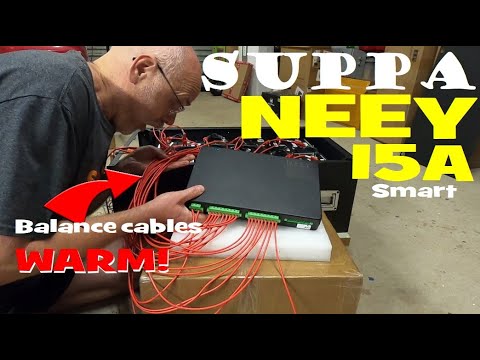I’m saying that “take my relay for example… they learned” doesn’t work. The authority of one field does not necessarily transfer to another. I would gladly discuss the other field on its own merits 
So let’s break this down. The cell has a certian Ah capacity. It degrades over time, so there is a certain dc/dt (the change of capacity over time) first derivative, and this value is negative.
As long as the dc/dt for the cells are the same or close to each other, you need only a small bit of current to keep them top-balanced. This essentially is the same as saying “as long as they degrade at the same rate”. The unit for this will probably be something like mAh/cycle, since we know that the life of the cell depends more on the number of cycles than the age.
The second derivative is d^2c/dt^2, that is the rate at which the first derivative changes, or in layman’s terms, the tempo at which the wear accelerates. We expect this to be positive: Towards the end of the life of the cell, this will go faster.
Again, as long as the second derivative of the cells are the same, or close to each other, there is no problem.
The issue isn’t the factors themselves. It is the delta between them.
The crux of my argument, is that once that second derivative gets out of bounds so far that the balancer can no longer restore the balance on the next recharge, that’s when one of two things happens: Either you need a bigger balancer… or you throw away the battery/cell.
I’m not saying a bigger balancer won’t buy you time. I’m saying that if you need a 2-ampere balancer, you’re probably not far away from option 2.
A bigger balancer will buy you time. 50mA really is very low. I cannot prove this, as I don’t know the expected variance between the cells (maybe the people who make the batteries actually know this?  ), but you may well be right that such a small balancer will prematurely junk a battery that had some life left in it.
), but you may well be right that such a small balancer will prematurely junk a battery that had some life left in it.
But 2 ampere? Forget it… if you need that much, at the end of life… you’re just treading water, trying to avoid the inevitable.
Edit: Basically, if you lost 2Ah more on one cell than on the others, since yesterday, then the balancer will be able to balance that in about an hour. Having one cell degrade at 2Ah/cycle faster than the rest… is not a saveable situation.
Is 50mAh/cycle a saveable situation? Maybe… I have my doubts.
